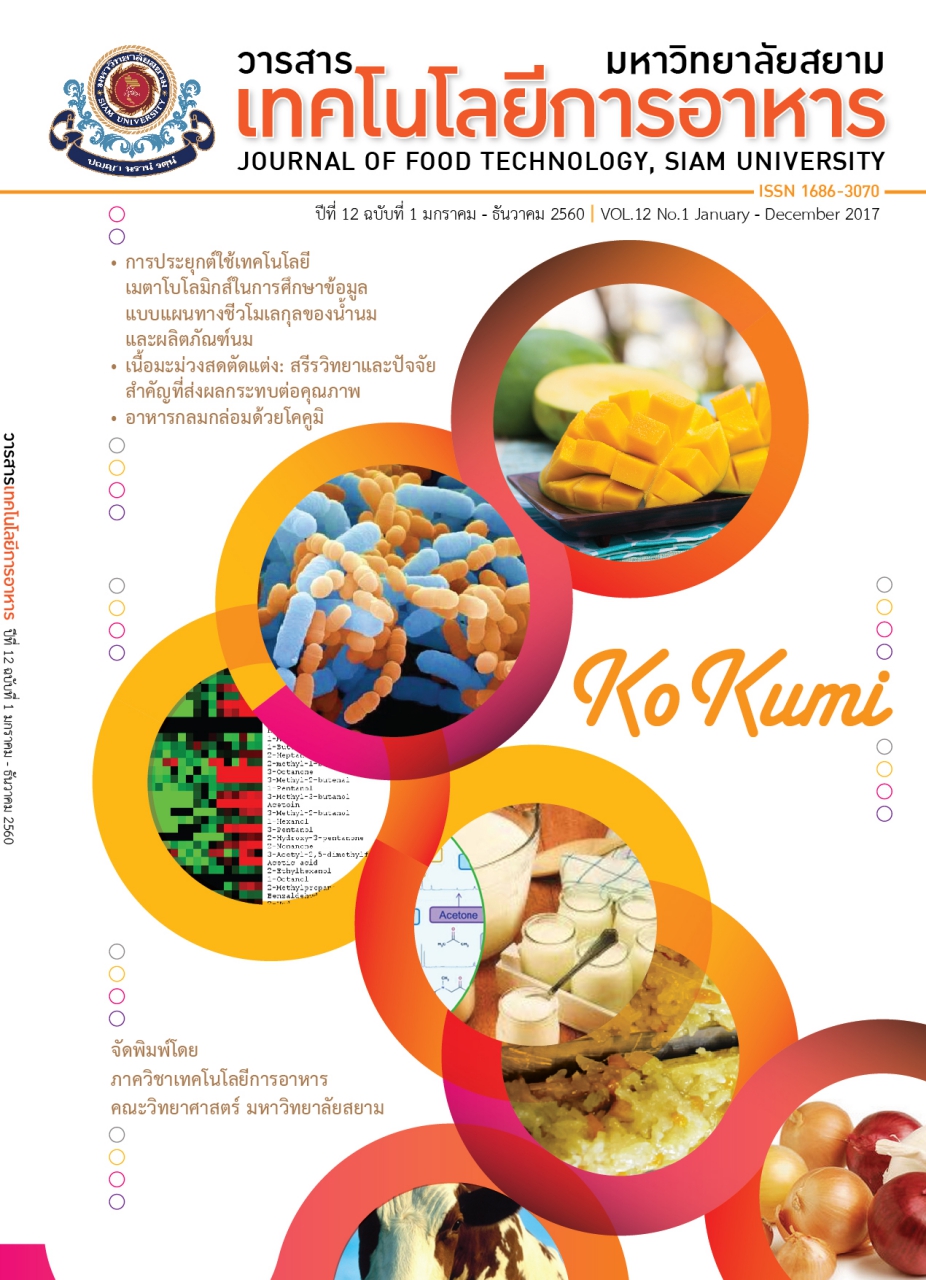Development of Sticky Rice in Bamboo for Value-added Local Agricultural Products in Sakaeo Province Area
Main Article Content
Abstract
Khao-larm (sticky rice in bamboo) is one of well-known sticky rice products normally which comprise coconut milk, sugar, and adding other ingredients. Those ingredients are mixed, placed into the green bamboo tube, and then cooked by using roasting method. This study aimed to investigate germinated brown sticky rice as a nutrition enrichment in Khao-larm product. The five ratios of white sticky rice to germinated brown sticky rice at 100:0, 75:25, 50:50, 25:75 and 0:100 (w/w) were studied. The ratio of 50:50 (w/w) was obtained high acceptability scores in terms of overall taste, texture and overall acceptability. Three types of sweeteners (white sugar (control), fresh sugar cane juice and fresh sugar cane juice with brown sugar) was utilized for improving the taste attribute of products. Sensory evaluation was applied to evaluate the acceptability of product by using 9-point hedonic scale with 50 untrained panelists. The results revealed that Khao-larm formula using fresh sugar cane juice received a similar score of taste, texture and overall acceptability compared to control (white sugar). However, the appearance and odor score of both samples were not significantly different (p>0.05). The developing of product appearance and nutritional enrichment of Khao-larm was carried out. Consumers rated the average acceptability scores of Khao-larm being added cassava, sweet potato, and dried longan at 7.78, 7.83 and 7.42, respectively with the level of “like moderately to like very much”.
Article Details
How to Cite
Charoenphun, N., & Wangtueai, S. (2017). Development of Sticky Rice in Bamboo for Value-added Local Agricultural Products in Sakaeo Province Area. Journal of Food Technology, Siam University, 12(1), 48–58. retrieved from https://li01.tci-thaijo.org/index.php/JFTSU/article/view/76155
Section
บทความวิจัย (Research Articles)
Copyrights of all articles in the Journal of Food Technology available in print or online are owned by Siam University and protected by law.


